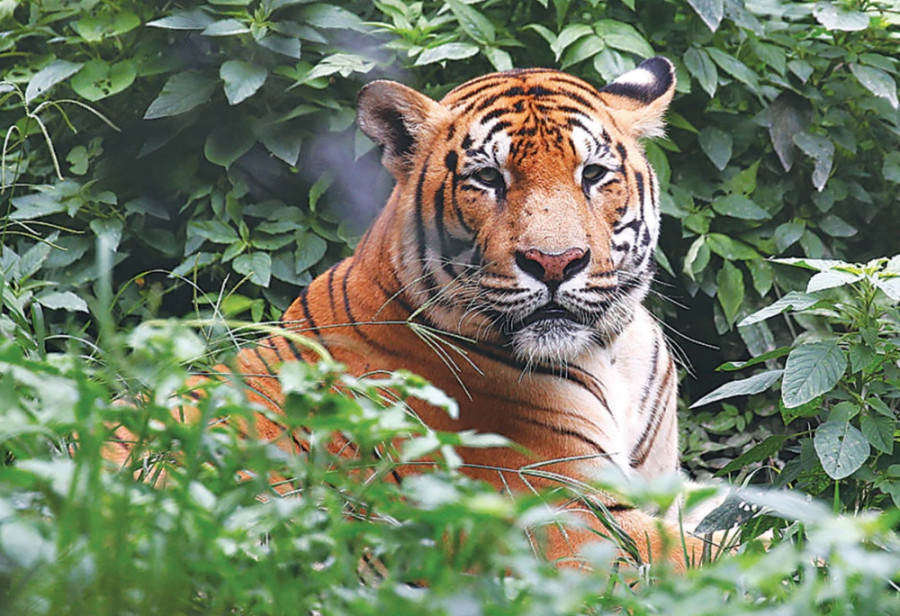Lumbini Province
Conservationists begin study on tiger movement and behaviour in Bardiya
The study is expected to lend solutions to the problem of human-animal conflict.
Kamal Panthi
A team of conservationists has initiated a study to identify the movement and behaviour of tigers at Bardiya National Park. The team plans to install satellite collars on the big cats to trace their movement.
Conservationists on Monday darted a five-year-old tiger in the Kauwabhar area with a tranquilliser and attached a satellite radio collar to it.
“We will study the movement of the tiger and the way it hunts with the help of radio signals,” said Asim Thapa, the assistant conservation officer at the park.
According to him, the study on the movement and behaviour of tigers began after the Department of National Parks and Wildlife Conservation, as per a ministerial-level decision, issued permission for the study of four tigers of Bardiya and Banke Complex.
“Every activity of the tiger will be monitored from the park’s headquarters in Thakurdwara. Field inspections will be conducted in accordance with the information collected through radio signals,” said Thapa.
A joint team of conservationists from the department, National Trust for Nature Conservation, International Union for Conservation of Nature, Michigan State University in USA and Bardiya National Park are involved in the study of tigers along the East-West Highway. The team will also study the possible measures to reduce human-animal conflict and the road infrastructure that passes through the protected area.
“Tigers cannot freely move across the highway due to heavy traffic. As a result, both tigers and people are at risk. We will recommend the government to construct over-and-under passes for the free and safe movement of tigers and other animals,” said Naresh Subedi, a wildlife expert working at National Trust for Nature Conservation.
According to him, the study team will track how often the tiger crosses the highway, its body temperature, heartbeat and its behaviour. A similar study on tigers is being conducted in Banke, Bardiya, Chitwan and Parsa districts.
Conservationists believe that a thorough study on the tigers’ behaviour and movement will be helpful in resolving human-animal conflict in the highway areas.
“The study will help minimise human-animal conflict and preserve wildlife in protected areas,” said Rabin Kadariya, chief at the National Trust for Nature Conservation.
However, the study on tigers is not immediately possible in the buffer zone of the national park where frequent incidents of human-animal conflict are being reported of late.
Mohammad Kar Khan, the central member of the Federation of Community Forest Users Nepal, says it's important to carry out a similar study on tigers in the buffer zone.
“Human-wildlife conflict is mostly reported from the buffer zone area. Installing radio collars on the tigers in the area should also be prioritised,” said Khan.
As per the latest tiger count held in 2018, there are a total of 87 tigers in the Bardiya National Park. But conservationists and park officials estimate the number to be 125 at present. With the rise in the number of tigers, human-animal conflict has also increased in the park area. As many as 17 people in Bardiya and two in Banke were killed in tiger attacks in the past two years.




 11.12°C Kathmandu
11.12°C Kathmandu















